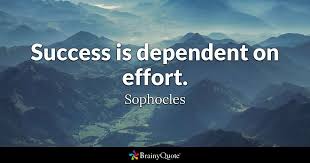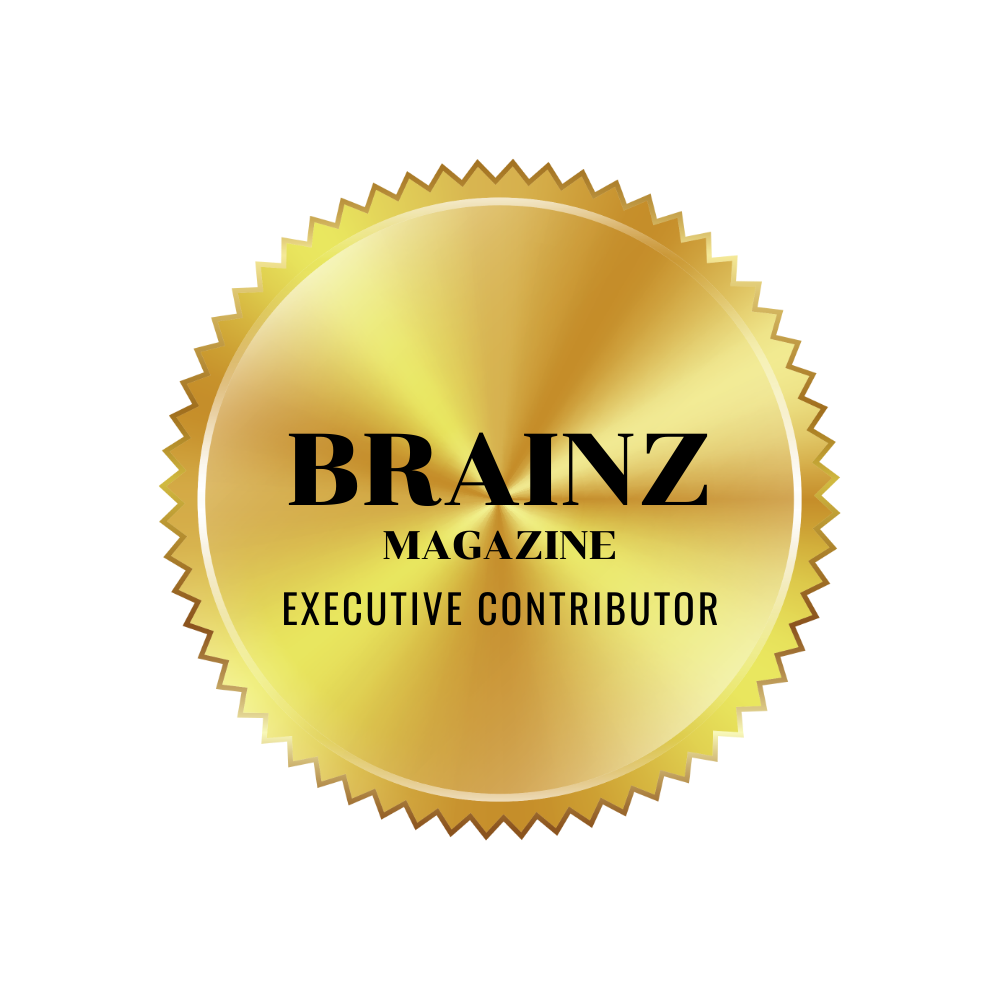
by Julia Felton | Nov 12, 2019
In today’s VUCA world it is important to have leadership anchors (secure bases) to help us feel safe and secure. I don’t know about you but I often feel that I am being tossed around by all the turbulence that is happening around me. Sometimes I feel a bit like a boat that is being pounded by the waves and when I can’t control these situations it can create anxiety and stress. It’s hardly surprising that given the environment we live into today 1 in 4 people suffer from some form of mental health challenges.
So what can we do to minimise this anxiety? What leadership anchors can we put in place to help us feel secure during these turbulent times.
In his book Care to Dare author George Kohlrieser reveals how when you have an anchor or secure base it can help alleviate anxiety as you feel supported and acknowledged. Having a secure base or bases can help unleash astonishing performance that delivers exceptional results. In fact he defines having a secure base as “a person, place, goal or object that provides a sense of protection, safety and caring AND offers a source of inspiration and energy for daring, exploration, risk taking an seeking challenge.”
What surprised me most by this definition was that:
1. You can have multiple secure bases
2. Secure bases don’t just have to be people, they can be places, goals, objects or activities.
I know in the past I have often thought about security coming from other people but what I realised was that for me my horses are a secure base which is why they make such great partners for me to work alongside. I know they have my back and I trust them explicitly during our workshops to bring their best and challenge my clients in a daring way to step into their leadership greatness and become the person they are destined to be.
In today’s VUCA world business also has an increasing role in creating safety bases for our employees. With team members spending nearly a third of their week at work if they don’t feel safe they will not be as engaged and productive as they could be, and this will have a knock on effect on profitability.
Furthermore, the 2019 People Management Report conducted by the Predictive Index revealed that when team members feel that they have a secure base that gives them what Harvard Business School Professor Amy Cuddy refers to as Psychological safety they are less likely to quit.
“Psychological safety is a belief that one will not be punished or humiliated for speaking up with ideas, questions, concerns, or mistakes”
When leaders create psychological safety then 96% of team members feel that they can approach their boss with problems as they realise that they will not be judged for their ideas or contribution. Contrast this with just 43% of team members who feel they can speak up when there is little or no psychological safety.
In addition the data shows the subtle ways that managers can sabotage their teams and destroy psychological safety (e.g., not valuing employees’ unique skills, not being approachable, and not respecting personal values). While these aren’t outright displays of mistreatment, they still negatively impact the employee experience and contribute to low levels of team engagement.
The first step to creating a secure base with someone and in doing so provide psychological safety is by forming a deep connection with them – a bond. When people feel bonded to each other they trust each other. They know the other person has their back. There is a transparency in the relationship and both parties respect each other and value each other. These bonds are created through “water cooler talk” and actually investing time in getting to know your team members as individuals. Leaders need to know what makes every team member tick so they can effectively inspire and motivate them to be their best.
However, the rub here is that very few leaders can be an effective secure base for someone else if they don’t have their own secure base. This is one of the reasons that we often describe success in business as being a team sport. Few people can design a successful life without the support of others, and those that put success ahead of relationships often end up as “independent loners” and can often suffer from illness, addiction, depression and chronic loneliness. Conversely, those that put relationships ahead of goals can often end up failing to live up to their full potential.
So my challenge to you today is to get clarity on who or what are your secure bases, and where do you provide this role for others?. It can be really enlightening to understand where these drivers lie and how they impact you. Please share your thoughts with me.
A special thanks to Marie O’Hara and Coaching York for inspiring this post.
Julia Felton (aka The Business Wrangler) is the founder of Business HorsePower. Business leaders, entrepreneurs and executives hire her to accelerate their business performance by harnessing the energy of their people to work more collaboratively together. By aligning purpose with actions the team achieves exponential results as everyone starts pulling in the same direction.
Julia believes that business is a force for good and through designing purpose-driven businesses that leverage the laws of nature, and the herd, you can create businesses founded on the principles of connection, collaboration and community that make a significant impact in the world.

by Julia Felton | Oct 21, 2019
Recently I
was attending some sales training and we were discussing the difference between
a fixed and growth mindset. In essence a fixed mindset believes that everything
is as it is for a reason and we really can’t change that. Contrast this with a
growth mindset where we are always looking for opportunities to learn and
develop. There is no such thing as
failure only learning opportunities. People with a growth mindset are continually
looking to improve whilst those with a fixed mindset are often looking for
someone to blame.
As I listened
to the training and reflected on my own position I realised that I can often be
a combination of the two. Most of the time I have a growth mindset. After all I
create experiences for people to stretch out of their comfort zone and grow.
However, I realised that often when it comes to sales I have a fixed
mindset. I keep trying all kinds of things
and when they don’t work I blame my products, services or imperfect execution.
Then the
trainer said something that hit hard. He said that when it came to sales the
difference in success between the fixed and growth mindset all came down to
EFFORT. This floored me. I had always
thought I was putting in enough effort but I guess if I am really honest I
haven’t been.
These are
the skills I have not been cultivating when it comes to putting EFFORT into
sales conversations.
Enthusiasm – often I just dread the sales process.
It can seem sleezy and forceful and I know that this comes from being the recipient
of some less than ethical sales tactics that have left me with buyers remorse
as I have invested in programmes and services I never really needed. God forbid that anyone would see me like that.
Focus – success in sales requires focus
and consistency. You need to be laser like in identifying the solution that you
offer and who it serves. You need to be confident that your solution meets their
needs. Any wavering or doubt on your part and the potential buyer will sense
this and so never conclude the purchase.
Follow
Through – according
to the latest research it can take upto 12 touch points to convert a prospect
to a client. That’s an awful lot of
interactions. So it is imperative to continue to follow up with people. Even
those that say No, because a No often means not just now.
Overcome
Objections –
mastering how to overcome objections is essential if you are to be successful
at sales. Think ahead to some of the common objections that your prospects have
and craft answers to these. Typically they will involve the price, so ensure
that you always help the client understand the return on investment (ROI) of
working with you. A good rule of thumb is that you should be able to deliver
10x value. In other words if your service costs £10,000 then the client should
be able to achieve a £100,000 cost saving or revenue uplift.
Resilience
– given that only
some 3% of people and waiting and willing to buy when you connect with them the
prospect of you getting no response is really high. This means that you need
resilience to pick yourself back up and try again. Remember a No is often this is not right for
us right now. Try this game and see how many No’s you can get in a day. Every
No takes you closer to getting a yes, so embrace the process and don’t take No
personally. It is never a reflection on you
Trust – the great thing about having to
have multiple contact points with someone before they purchase means that you
have the opportunity to build trust. Always be in service to the other person
and never be afraid to withhold your services if you don’t think they are a
right fit for the prospect. You will earn significant levels of trust by
referring them to another supplier or solution and in my experience they will
return in due course.
So when you are thinking about sales please make
sure you put in enough EFFORT or else the process simply won’t work. Now I’m off to start changing some habits and this
new found wisdom
Julia Felton (aka The Business Wrangler) is the founder of Business HorsePower. Business leaders, entrepreneurs and executives hire her to accelerate their business performance by harnessing the energy of their people to work more collaboratively together. By aligning purpose with actions the team achieves exponential results as everyone starts pulling in the same direction.
Julia believes that business is a force for good and through designing purpose-driven businesses that leverage the laws of nature, and the herd, you can create businesses founded on the principles of connection, collaboration and community that make a significant impact in the world.

by Julia Felton | Oct 1, 2019
Do you often feel that the day gallops away with you and you don’t get done what you wanted? Do you get frustrated by all the items that distract you in your day? Well, the good news is that you are not alone—but the challenge is that you are being reactive in your business, rather than pro-active.
Great leaders understand that they need to grab the reins and take charge of their business if they are to be successful. They need to lead their day, rather than let the day lead them. And whilst this is easy to say, it’s often more difficult to do in practice.
In fact, I didn’t realise how much I let distractions like email and social media run my day until earlier this month. I moved house and didn’t have any internet access for three weeks. My mobile phone signal was just one bar, so I also only had limited internet access through my phone. What a revelation. I got so much done, and this was just highlighted by the day my internet satellite was installed—and I suddenly got dragged back into the distractions of email and social media and had the least productive day ever.
So, here are my top tips to help you create unbridled productivity.
Turn Off All Notifications
I know it sounds obvious and you’ve been told this before, but turning off all the notification settings on your computer and phone can be transformational. Did you know that research by Google revealed that, once you are disturbed from a task, it takes you 20 mins to get back to the level of focus you had before the interruption?
Stop Task Switching
Just figure out how much time you waste daily switching between tasks caused by the interruptions (as noted above). Only work on one task at a time until it’s complete.
Block and Tackle
To avoid task switching, block and tackle your day by booking out times in your diary to get tasks done. In my experience if something is booked in my diary, it happens—if it isn’t, it doesn’t. So block time each week for managing your accounts, business development, blog writing, coaching team members, or whatever it might be for you. Research reveals that 90 minute chunks are the optimal time for focus, so break your tasks into this time frame. If you think a project will take longer, then schedule multiple 90 minute blocks with breaks between them.
Track Your Results
Set goals for each day, week, and month, and then be ruthless in tracking these metrics. When you first start tracking your activities, you may well be surprised at what you are doing. Be courageous and stay with it, as the more you focus on these metrics, the more energy you will put into achieving them—and then within a short period of time you will experience rapid results.
Plan Out Your Day
Set an intention every day for what you will achieve that day, and then prioritise your activities so that you achieve this. Your priorities should be the activities that will enable you to achieve your bigger goal and vision, and they should be done first thing each day.
Finally, consider adopting the 90-Day Year Principle where you think about your business as having only 90 days. You then break down the 90 days into 6 two-week sprints. It’s easy to focus on what you want to achieve in 2 weeks, and this then drives your daily and weekly plan. Having a plan makes it easier to prioritise what you want to achieve each day, and if you also have some accountability in place, you will also be more motivated to achieve this.
Just imagine what would be possible in your business over the course of a year if you made just a 1% improvement in your productivity per day. The compound effect would kick in and you would experience a 10x improvement.
What practices are you putting in place today to help you and your team experience unbridled productivity?
Julia Felton (aka The Business Wrangler) is the founder of Business HorsePower. Business leaders, entrepreneurs and executives hire her to accelerate their business performance by harnessing the energy of their people to work more collaboratively together. By aligning purpose with actions the team achieves exponential results as everyone starts pulling in the same direction.
Julia believes that business is a force for good and through designing purpose-driven businesses that leverage the laws of nature, and the herd, you can create businesses founded on the principles of connection, collaboration and community that make a significant impact in the world.

by Julia Felton | Aug 29, 2019
We’ve all heard the phrase “Change is constant” and I think we can all agree that right now the speed of change in the world is seismic. Technological advances are changing the way we live and work at lightening pace. According to the findings documented in Exponential Organisations much of what we learned 10 years ago is obsolete and half of what we learned 5 years ago is irrelevant. If we are to stay abreast of what is happening then it is essential that we transform and adapt to our ever changing environment.
That means we will need to transform and reinvent ourselves and/or our businesses to stay relevant. Sometimes that transformation will be minor, sometimes it might be major, but adapt we must if we are to survive. Did you know that three out of four companies in the Fortune 1000 have been replaced in the past 10 years alone, and 50% of the Fortune 500 is predicted to swop out in the next 10 years? Furthermore, according to the World Economic Forum, 65% of the jobs that exist today won’t exist in a decade. So learning how to adapt so that we can navigate this change is a pre-requisite if we are to thrive in today’s economy.
Success mentor David Neagle identifies the five stages of transformation and reinvention as:
- Awareness
- Decision
- Change
- Adapt
- Grow
Knowing
where you are in the process can be helpful, but the reality is that this
change is never linear. I’m sure like me you’ve made a New Year’s resolution
and never kept it. For example, you are
aware you are overweight, you make a decision to stop eating chocolate but you
never change your buying habits so it never happens.
What stops
the process is fear. It is a powerful and insidious force that permeates your
mind and sabotages your goals. The only way to overcome this fear is to be
crystal clear on why you want to transform – what are the benefits of this
happening and how will your life change. Without a compelling why for taking
action then you will never change your behavior and so be able to adapt to the
new circumstances.
The opposite state of being in fear regarding transforming and reinvention is trusting the process. Knowing that you will vacillate between being fearful and then trusting the process can help alleviate some of the fear. When you trust something you feel safe and from this space you then feel empowered to explore, see the options and so grow. Contrast this with when you are in fear. Fear often paralyses us as we cannot see the options and so we shrink and hide out. We give away our power as we look to others to provide a safe space for us to grow into.
It’s been interesting watching my horses go through the transform and reinvent process as they have recently moved to a new barn. Luckily they are very trusting of me and easily loaded into the horse transport to bring them to their new home. However, once here I quickly observed the anxiety and fear that gets aroused when they are separated from each other and I am not around. In these new surroundings their herd instinct is heightened and when they can’t see each other they start to panic. Consequently I have been making sure that they all graze in paddocks where they can see each other. When they feel the safety in numbers they are calm but when separated their energy levels rise (particularly when they see something scary) and the herd start running and whinnying to each other.
My role
over the next few months will be to move them from fear to trust so that I can
go out riding. I’ve already started this process with Bracken, leading her down
the driveaway alone and helping her get familiar with other situations with me
next to her on the ground to support her.
She trusts me implicitly so this process has been quite easy as Bracken
looks to me for safety.
Contrast
this with Thistle is much more self-assured but quite frankly doesn’t trust me.
I don’t have the same relationship with
her as I do with Bracken, so progress has been much slower as I am continually
have to prove to her that I am a trustworthy leader who she can feel safe with.
And until that happens she will never be able to grow and adapt.
As a leader
we need to aware of this transformation process and how fear can derail the
process. What can you put in place to help your team feel safe as we navigate
change? Recognise too that each team
member may well need something different from you, so as a leader you
definitely need to be able to adapt and treat each team member as an
individual. When it comes to leading team members, especially during change,
there is no one solution fits all.
Julia Felton (aka The Business Wrangler) is the founder of Business HorsePower. Business leaders, entrepreneurs and executives hire her to accelerate their business performance by harnessing the energy of their people to work more collaboratively together. By aligning purpose with actions the team achieves exponential results as everyone starts pulling in the same direction.
Julia believes that business is a force for good and through designing purpose-driven businesses that leverage the laws of nature, and the herd, you can create businesses founded on the principles of connection, collaboration and community that make a significant impact in the world.

by Julia Felton | Aug 14, 2019
For many years trust has been considered a “soft” corporate issue, in part because it has been so difficult to measure. Whilst intuitively leaders knew that the level of trust in the organisation impacted team performance and company value, there was no concrete evidence to support this. However, new research by Accenture has quantified the impact of trust on a company’s competitiveness. And the bottom line is that trust is anything but soft.
What is trust?
Accenture Strategy defines trust as “a consistent experience of competence, integrity, honesty, transparency, commitment, purpose and familiarity.” Trust acts as a lubricant that helps oil a company’s relationships with its stakeholders and, in doing so, builds shared value for the business. When there is an actual or perceived breach of trust then the impact on the business can be catastrophic. Remember the impact that the Enron scandal had on its accountants Arthur Andersen. Whilst eventually Arthur Andersen was exonerated from any wrongdoing, it was not before the company imploded, as clients left in droves not wanting to be associated with a business that was perceived to have been complicit in the demise of Enron.
Technology, social media, and the digital economy have resulted in trust incidents becoming increasingly visible to the general public. This heightened transparency means trust is a highly flammable, ever-present concern for business leaders. No longer can leaders assume that breaches of trust can be dealt with by great PR interventions. Instead, business leaders need to intentionally create a culture that builds, maintains, and preserves trust.
Trust needs to become baked into the DNA, strategy, and day-to-day operations of all aspects of business because it impacts relationships with all the business stakeholders.
Customers
Increasingly, customers have more choices than ever before and are selecting providers based on values alignment. Customer satisfaction occurs when a companies products and services live up to brand promise thereby improving reputational value and trust. Companies that cannot deliver on brand promise or transparency will lose customer trust and, consequently, business.
A recent Accenture Strategy study of 25,000 global consumers found that, of customers who switched companies in the past year, 46 percent did so because they lost trust in the company. And switching isn’t the total cost. Customers are willing to speak up, organize, and boycott when their expectations aren’t met.
Employees
In the war for talent, a company’s reputation and actions become more important to job seekers. Accenture Strategy research revealed that more than one-third of workers surveyed ranked reputation as a top-three motivation to work for their current employer.
Suppliers and trusted partners
Key players in today’s business value chain are suppliers and trusted partners as they enable faster innovation cycles with more flexibility. The recent Accenture Strategy research points out that 84 percent of supply chain executives say they will increasingly use distributed manufacturing networks (more third parties) to meet customer demands.
Media
The advent of social media has meant that the opinions of the general public play out in real time across all forms of media. This has can have both positive and negative impacts on building trust, and also provide a forum whereby negative trust breaches can be acknowledged and rectified.
Analysts and Investors
Increasingly, analysts and investors are not just interested in the financial metrics of a business, but also in the reputation, social impact, sustainability, and employee engagement. A joint report developed with the United Nations Global Compact found that 88 percent of investors see sustainability as a route to competitive advantage.
With trust impacting so many aspects of a business, it is essential that leaders focus on how to build trust and embed a trust into the organizational culture. They need to that ensure that all the companies behaviors and actions match the company stated values in the eyes of all major stakeholders. This means ensuring that there is alignment throughout the organisation and everyone is pulling together in the same direction.
The consequence of leaders not focusing on developing a trust-based culture within the organisation is that it can significantly negatively influence the bottom line and competitiveness in the marketplace.
Julia Felton (aka The Business Wrangler) is the founder of Business HorsePower. Business leaders, entrepreneurs and executives hire her to accelerate their business performance by harnessing the energy of their people to work more collaboratively together. By aligning purpose with actions the team achieves exponential results as everyone starts pulling in the same direction.
Julia believes that business is a force for good and through designing purpose-driven businesses that leverage the laws of nature, and the herd, you can create businesses founded on the principles of connection, collaboration and community that make a significant impact in the world.

by Julia Felton | Jul 14, 2019
Great leaders are those people that can view any situation through multiple lenses, and so find different perspectives that can yield different results. I’m sure many of you will be familiar with the three positions of perspective. This is an NLP phenomenon that, in essence, states that there at least three viewpoints through which you can look at any situation. The three perspectives are through the lenses of:
- Self
- The Other Person
- The Observer
The perspective of self is naturally your own viewpoint. For example, you might think that designing a product to solve your book closing is not possible. From the other’s perspective, they might believe it is absolutely possible; whilst the observer, who typically has no vested interest in the outcome, can see another viewpoint altogether.
Emerging Leaders
This is exactly the situation I found myself in recently as I was mentoring a group of high school students to create their own business and develop their entrepreneurial flair for a competition called Young Enterprise. When we started out, the students launched gung ho into the project, determined to create an amazing product without undertaking much market research. And big surprise: the first product idea they came up with failed.
However, looking at the project through a new lens, they sought to develop a product that would solve a real problem that they all faced. That was when Page Keep was born, because their biggest frustration was how to keep their textbooks open on the right page when they were studying. Most of the books kept shutting, wasting valuable time and energy as the students had to find the page again.
When they first shared the idea with me, I must confess to being somewhat skeptical — but I quickly realized that was my lens. I was being constrained by my past experiences. However, the students had no fear and, unconstrained by rules, assumed that anything is possible and achievable. So off they went to their Design and Technology Lab to experiment making prototypes. Yes, some failed — but eventually they came up with a great design that was really functional and based on their market research of what the other students wanted to buy.
However, what happened next really highlighted to me how narrow my lens of innovation had become. The students were not content with making their Page Keep from any old plastic. No, if they were to make a product, it had to be environmentally friendly and sustainable. So with no prompting, as if it were the most natural thing in the world, they went and sourced the UK’s only supplier of recyclable plastic and persuaded them to permit them to have a just-in-time delivery schedule. Furthermore, they designed the product in an interlocking design so as to minimize wastage. How inspired is that?
There are the three lessons I have learnt from this emerging generation of leaders.
1. When things aren’t working out, stop and see if there is another solution. All too often in business we keep ploughing on with the same old strategies, which aren’t yielding the results we want, and we never think to try something new. The students rapidly realized their first product wasn’t viable and so created something new.
2. Often it is only a minor change in perspective and approach — in other words a pivot — that can catapult the situation to very different results. Through realizing they could personalize the Page Keeps, a whole new market and revenue stream opened up for them.
3. Once you have seen the situation through a different lens, then results accelerate as momentum drives you towards the goal. For the students, once they saw the initial success of their product, they were able to make incredible sales and the leverage this into selling workshops to teach other students what to do.
These emerging leaders are ambitious, enthusiastic, hardworking, and see endless possibilities around them. Maybe that is why they are such great ambassadors for saving our planet.
I’m curious: what inspiring lessons are you learning from our emerging leaders that are really forcing you to rethink the way you see the world and the lenses you are using to filter information?
Julia Felton (aka The Business Wrangler) is the founder of Business HorsePower. Business leaders, entrepreneurs and executives hire her to accelerate their business performance by harnessing the energy of their people to work more collaboratively together. By aligning purpose with actions the team achieves exponential results as everyone starts pulling in the same direction.
Julia believes that business is a force for good and through designing purpose-driven businesses that leverage the laws of nature, and the herd, you can create businesses founded on the principles of connection, collaboration and community that make a significant impact in the world.

by Julia Felton | Jun 14, 2019
With increasing demands in our time, one of the challenges that leaders continually face is that of productivity. How do we get more done with less? Clearly, one solution is to have highly engaged team members that are aligned and pulling together behind the same shared vision.
However, with only 13% of the global workforce highly engaged at work (Gallup 2016), we are obviously not doing a great job at this. Combine this with the fact that Deloitte 2019 Human Capital Survey cites that 80% of companies don’t think they have the right leadership capability in place to address this, then we obviously have a leadership crisis on our hands.
Nothing frustrates me more than the amount of time, energy, and resources that we waste on a daily basis simply because we are not effective and productive and don’t have efficient, aligned business practices in place.
This week it has seemed like I have not been in control of my schedule. I fell victim to reacting to everyone else’s agenda rather than pro-actively leading my business, and the result is that I’ve been left feeling frustrated that I have not achieved all the things that I wanted to do. My productivity index has plummeted as I have navigated the uncertainty of all the events conspiring around me.
Being a proactive leader of your business and grabbing the reins is so important to ensure success. When you feel in control of your day, and it shapes out as you planned, the health benefits are significant as you feel less stressed. Yet there are times when life seems to take over and you feel tossed into the roller-coaster of life.
That’s what happened this week when my hosting company took down my website for nearly 30 hours, just when I was in the middle of a launch!!! Exasperated does not begin to describe how I felt. Now they acted in good faith because my site was being hacked by bots that were impacting the performance of other website on the server, but still, that didn’t help me.
Remember R&D
So, faced with having wasted loads of time sorting out this issue, I found myself up against a few tight deadlines to get work completed. It was then that I remembered that old trick that really successful and productive people engage in daily. They practice R&D! No, not Research and Development, but rather Replicate and Duplicate.
When you replicate and duplicate, you become super productive as you leverage all the work that you have done before.
By simply repurposing old content, you can instantly create new products and services.
For example:
- If you have a talk you deliver frequently, turn it into a book.
- Convert a book into a workshop.
- Take a workshop and develop a coaching programme around it.
In this way, one piece of effort leads to at least three new offerings.
And of course, you can take content from two or three sources and combine them to create something brand new. That’s what I’ve done this week to enable me to create an article for a magazine by their deadline. I’ve re-purposed and re-packaged some of my earlier work. And I have to say the end result is pretty remarkable.
How can you maximize your efforts by building new products and services based on what you are already doing?
As a leader, how can you leverage your resources to deliver more with less? What systems and processes can you put in place that, once designed, can be duplicated and used time and time again?
In my own business, I have processes for everything from client proposals to onboarding, creating engaging social media content, and designing workshops. As a business that typically designs customised solutions for my clients, having a set bank of content that I use and then being able to tailor this for each client means that I am continuously replicating and duplicating material. This makes customising programmes very simple, as all the key components are already available, so I can quickly turn round work and leverage my valuable time in the process.
How will you use R&D to leverage your time, money, and energy today?
Julia Felton (aka The Business Wrangler) is the founder of Business HorsePower. Business leaders, entrepreneurs and executives hire her to accelerate their business performance by harnessing the energy of their people to work more collaboratively together. By aligning purpose with actions the team achieves exponential results as everyone starts pulling in the same direction.
Julia believes that business is a force for good and through designing purpose-driven businesses that leverage the laws of nature, and the herd, you can create businesses founded on the principles of connection, collaboration and community that make a significant impact in the world.

by Julia Felton | May 9, 2019
“Our current model of success is not designed to make us happy, to give us fulfillment, to give us meaning. It’s designed to accumulate. And it’s a model that is not sustainable anymore. We need a new way of doing business. But it is not something we just can do differently. It requires a different thinking. It requires a different consciousness.“
Peter Matthies, Founder, Conscious Business Institute
No one doubts that we are faced with increasing complexity and challenges coming at us globally, impacting us professionally, and touching us personally. Examples include climate change, income inequality, employee engagement, diversity and inclusion, stress and anxiety. and lack of purpose and meaning.
The current challenge for leaders is how do they navigate this new landscape they find themselves in it. Whilst many leaders recognise that the current ways of leading business are not sustainable as it focuses on profit and margin rather than the planet and people when under stress they revert to their “normal” behaviour. After all, that was the focus of the business which many of today’s leaders were brought up in.
The problem is that as employees observe how the leadership team acts in these critical situations, they withdraw trust. Relationships break down and accountability, ownership, personal leadership, proactive behavior, and contribution all suffer – while politics, slow decision making, and self-preservation rise. This does not create an engaged workforce and is one of the reasons why globally employee engagement is at just 13%, according to Gallup.
If organizations want to thrive and create healthy and vibrant business cultures with high levels of engagement, then business leaders need to think differently. They need to start focusing on their people and their drivers of success which ultimately come in the first instance from people’s basic human needs being met. In Peak, author Chip Conley distills Maslow’s Hierarchy of Needs into three essential levels: survive, succeed, transform. For employees, he suggests that at survival level they need money to ensure their base needs are met. At the succeed level, they want recognition and to feel valued; whilst at the transform level, employees want to feel inspired, a sense of contribution to the business, and a sense of contribution to society through the business.
Thinking differently about what drives our employees is critical as research shows that behavioral changes are not effective if they aren’t aligned with an individual’s mindset and consciousness. In other words, if we focus on what the individual does (their habits, behaviours, and actions) and expect to get the results we desire then that change is likely to be unstainable as the employee is not aligned with why the change needs to occur.
This is why I am a passionate advocate of the new leadership framework proposed by the Conscious Business Institute, which has identified five identities that must be aligned to create a successful organization. These are:
Self-Leadership
INDIVIDUALS can be fully themselves and contribute their authentic power. Fulfills the human need for self-expression.
Team-Leadership
TEAMS collaborate & communicate well and cultivate diversity & inclusion. Fulfills the human need for connection.
Organisational Leadership
ORGANISATION is values based & purpose-driven with a bold vision. Fulfills the human need for contribution.
Business Leadership
BUSINESS is socially responsible and measures its success holistically Fulfills the human need for security & growth.
Conscious Leadership
LEADERSHIP that’s inspiring, accountable, courageous, & empowering. Fulfills the human need for appreciation & care.
Each area speaks to a specific human need. By focusing on the mindset and consciousness of the employee sustainable behavioural change occurs as everything starts with who we are being, before looking at what we are doing and then having as a result. In other words, this structure helps to access the level of consciousness before providing concrete tools to apply day-to-day.
Julia Felton (aka The Business Wrangler) is the founder of Business HorsePower. Business leaders, entrepreneurs and executives hire her to accelerate their business performance by harnessing the energy of their people to work more collaboratively together. By aligning purpose with actions the team achieves exponential results as everyone starts pulling in the same direction.
Julia believes that business is a force for good and through designing purpose-driven businesses that leverage the laws of nature, and the herd, you can create businesses founded on the principles of connection, collaboration and community that make a significant impact in the world.

by Julia Felton | Apr 21, 2019
We’ve all been there: you walk into a room, and the atmosphere bristles with something unpleasant. You can’t quite put your finger on it, but there’s a tension in the air and the people working don’t seem happy.
Of course, the problem might be in your head. More likely, you are seeing employee disengagement and low spirits playing out across the office space.
Today, we’re investigating how much the physical office space affects employees’ wellbeing and morale and considering ways to improve it.
Different types of wellbeing
There are different types of wellbeing, and understanding each one is pivotal to creating a safe and productive workplace for your employees. The three types are:
- Physical wellbeing, which relates to how employees move through the space and stay energised. It also speaks to their physical posture when sitting or standing at their desk
- Cognitive wellbeing, which is about your staff recharging their energy, or finding physical space where they can concentrate deeply and come up with new ideas, and
- Emotional wellbeing, which is all about creating connections between employees and your company, so your staff feel happy coming to work.
Your workplace can be redesigned to suit all three of these areas, and address these different facets of your employees’ lives. Let’s breakdown the categories a little further, and explore how they relate to wellbeing, satisfaction and engagement.
1. Physical
Moving around throughout the day can shake off feelings of lethargy. Likewise, moving around promotes positive endorphins and boosts concentration.
Create a series of spaces around your workplace that employees can shift to throughout the day. While they should have their own desk somewhere in the office, they should also have the option of moving to common areas, couches and standing workspaces as they wish.
2. Cognitive
Modern work dictates that we should be always on, which means our brains are always seeking notification and reinforcement. Designate some ‘quiet zones’ in your office where people can retreat to if they want to recharge or deeply concentrate. These areas should be distraction free, to allow your staff to focus if they need.
3. Emotional
The emotional metric relates to our need for privacy, when we want it. Ensure your employees have somewhere they feel themselves; and once again, somewhere they feel like they won’t be distracted.
Also take into account that sometimes your staff will want to be social, and give them communal spaces to do this.
What does this mean?
On the surface, these metrics don’t directly relate to the physical landscape of your office – but if you dig a little deeper, you’ll see that the way you lay out the space your employees work in can directly affect the way they perform. Put someone in a space that doesn’t match their personality, work style or preferences and they’ll become unproductive. Allow them the freedom to choose their own work environment – or shift between multiple environments throughout the day – and you’ll have a stronger, more engaged workforce.
Julia Felton (aka The Business Wrangler) is the founder of Business HorsePower. Business leaders, entrepreneurs and executives hire her to accelerate their business performance by harnessing the energy of their people to work more collaboratively together. By aligning purpose with actions the team achieves exponential results as everyone starts pulling in the same direction.
Julia believes that business is a force for good and through designing purpose-driven businesses that leverage the laws of nature, and the herd, you can create businesses founded on the principles of connection, collaboration and community that make a significant impact in the world.

by Julia Felton | Apr 5, 2019
“Motivation is what gets you started. Habit is what keeps you going”.
Jim Rohn
For many years, I have been a big advocate of focusing on your strengths as, when leaders excel at what they love, they get into a state called flow. When this happens, it often feels like time flies by and we get extraordinary amounts of work complete. Typically, we feel energised and alive because we are doing what we love. However, I have recently changed my thoughts on this.
Yes, focusing on your strengths is important and can help you attain high performance, but only when it is combined with healthy habits. We live in a VUCA where everything is moving at a rapid pace. Life and business are more complex than ever. Achieving success is not natural anymore. It is a complex process that can easily get derailed. This is why leaders need to develop great habits to keep them on track.
In his book High Performance Habits, author Brendon Burchard identifies six habits that, when applied consistently, lead to high performance. This data comes from research conducted with over 30,000 people from 195 countries and has been quantitatively proved to be valid and reliable.
The six habits fall into two categories – three personal habits and three social habits.
- Seek Clarity – Having clarity is vital if you want to achieve high performance. Clarity helps give you direction on where you are going and the steps required to achieve it. However, high performance leaders don’t just have clarity on what they are doing, they also have clarity on who they want to be and how they want to show up in relationships. They bring intentionality to everything they do and, in doing so, stop being reactive to the circumstances around them. Furthermore, you don’t just get clarity once. High-performance leaders continually check back in and make sure they have clarity every time they take on new projects or enter new social situations.
- Generate Energy – High-performance leaders recognise their role is to energise others, and they can only do this if they have high personal energy levels. For leaders to stay on their “A game,” they need to be energied physically, mentally, emotionally, and spiritually.
- Raise The Necessity – Exceptional leaders know why they are doing what they are doing. They understand the consequences of not achieving their goals and the ripple impact effect this will have on others.
- Increase Productivity – High-performance leaders are experts in one specific area. They produce quality content on this subject matter and position themselves as the go-to person on that topic. This means that they have to develop a habit of saying no to opportunities that are not aligned with their area of expertise. Minimising distractions is a great way to maintain this focus and productivity.
- Develop Influence – To be successful, we all need a team of supporters around us. High-performance leaders invest in developing relationships with people who can support their efforts and help galvanise them towards their dreams.
- Demonstrate Courage – High-performance leaders look fear in the face and take courageous action day in, day out. This means they take bold action and step out of their comfort zone even in the face of uncertainty, threat, or ridicule.
The interesting fact is that, when you apply just one of habits listed above, you experience an increase in performance across all areas, so just imagine the compound effect that occurs when you consistently apply all the habits. This is the formula for 10x performance. So, what habits are you starting to apply today?
Remember, you need to be consistent, so I would recommend working on one habit at a time. Incorporate this new habit onto the back of something you already do in order to give yourself the best chance of success. Diarise it to ensure it gets done, or better still, incorporate it as part of your morning success routine.
Julia Felton (aka The Business Wrangler) is the founder of Business HorsePower. Business leaders, entrepreneurs and executives hire her to accelerate their business performance by harnessing the energy of their people to work more collaboratively together. By aligning purpose with actions the team achieves exponential results as everyone starts pulling in the same direction.
Julia believes that business is a force for good and through designing purpose-driven businesses that leverage the laws of nature, and the herd, you can create businesses founded on the principles of connection, collaboration and community that make a significant impact in the world.
















